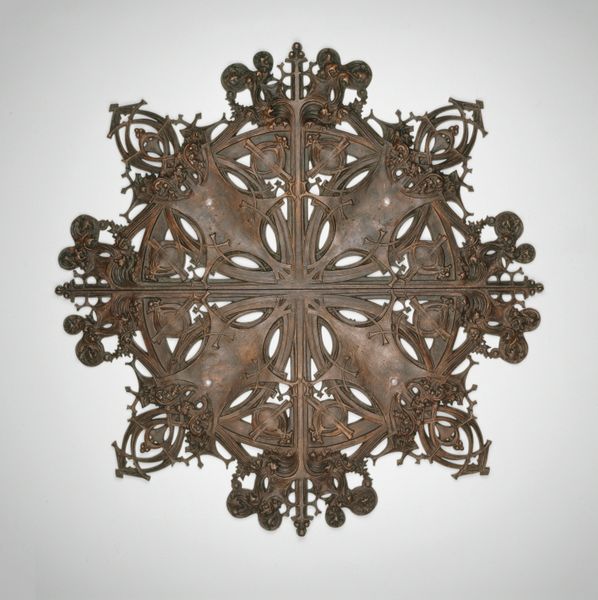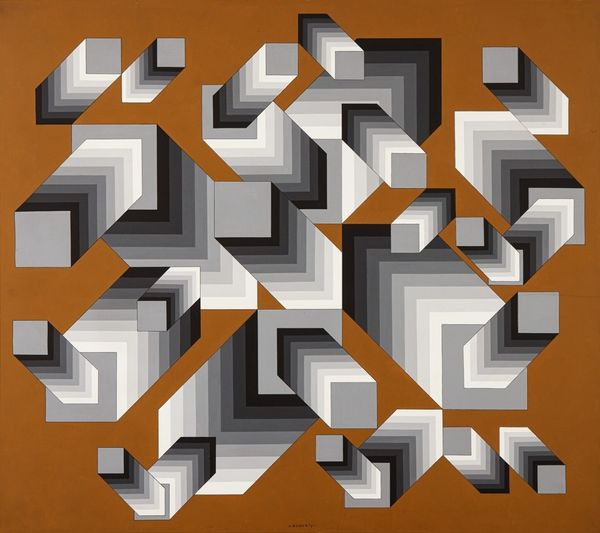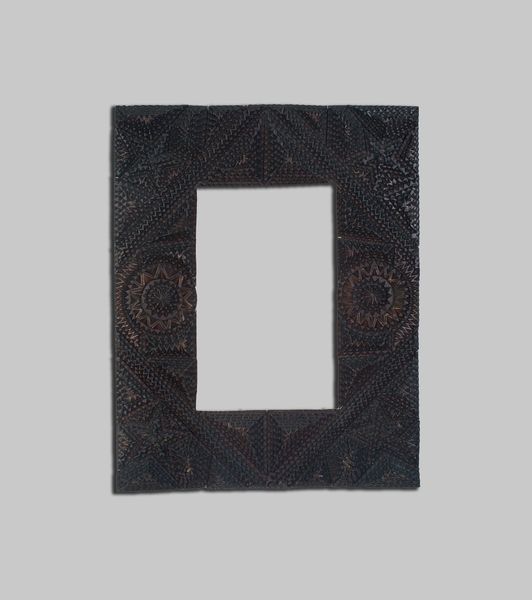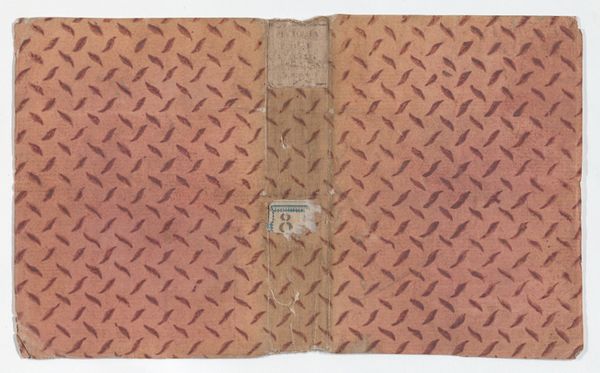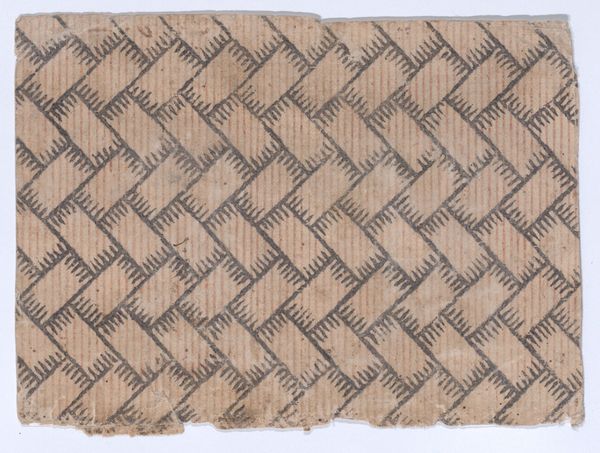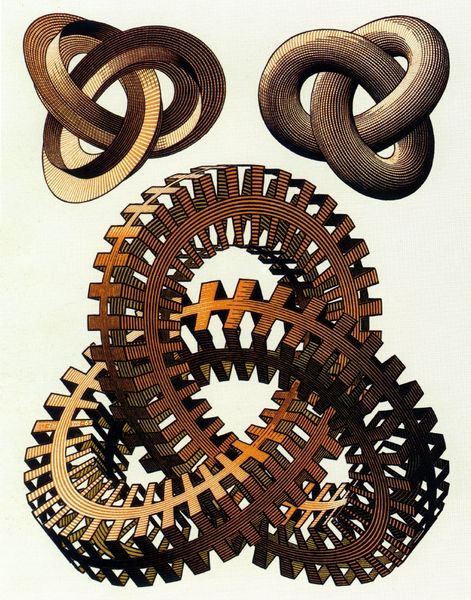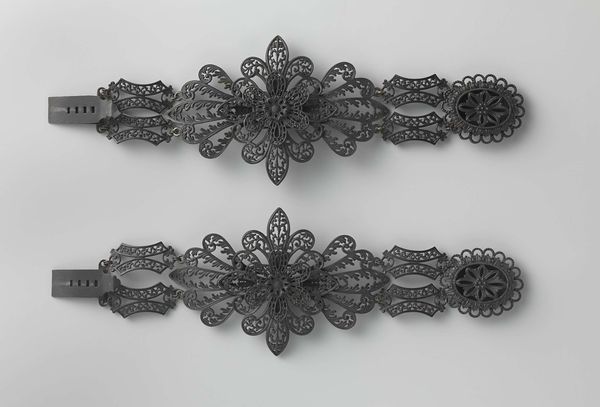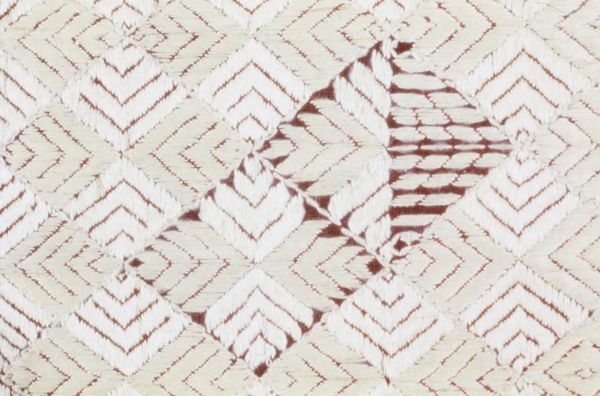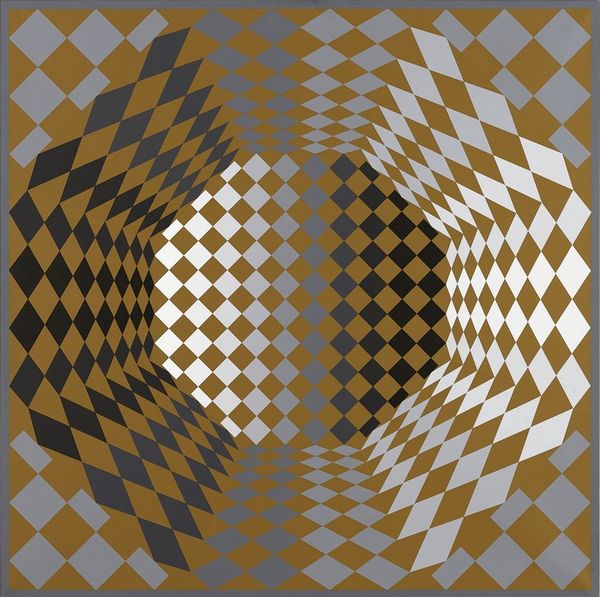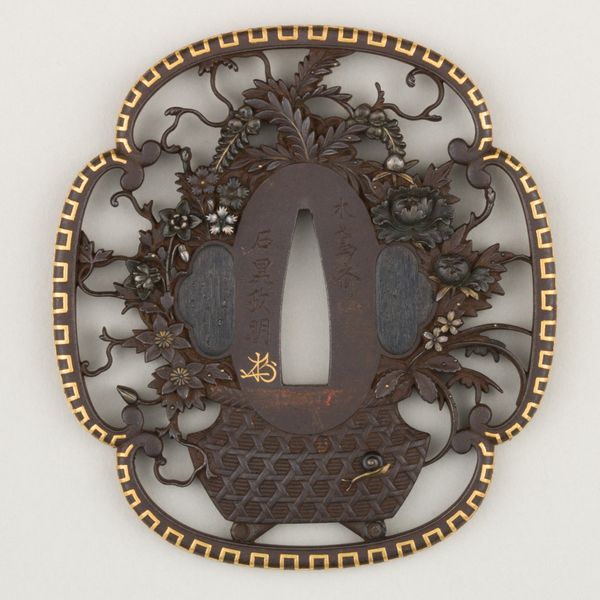
carving, wood
#
carving
#
pattern
#
geometric pattern
#
carved into stone
#
repetitive shape and pattern
#
organic pattern
#
geometric
#
wood
#
decorative-art
Dimensions: 33 ✕ 27.9 ✕ 8.9 cm (13 × 11 ✕ 3 1/2 in.)
Copyright: Public Domain
Editor: Okay, so next up is "Frame," dated 1880 to 1915, it’s listed as anonymous and appears to be made of carved wood. It looks like something you might find in an antique shop. The workmanship is so intricate. How should we interpret this as more than just a frame? Curator: It’s easy to overlook functional objects like frames, but their very existence speaks volumes about how societies have historically valued art and representation. Think about it – what kind of imagery would have been deemed worthy of such an ornate, hand-carved frame? Editor: Good point! So, the frame itself becomes a statement, almost like…propaganda, suggesting the importance of what it holds. Do you think this ornate style served a specific purpose for those who commissioned or created it? Curator: Absolutely. During that period, such elaborate craftsmanship often indicated wealth, status, and a certain adherence to established artistic conventions. It's not just decoration; it's a display of social standing and a reinforcement of cultural norms. Who had access to these crafts? What stories were they meant to emphasize? Editor: So it is a signifier and guardian of value. Did these kinds of frames often dictate how the art inside them was perceived? Like, did the frame contribute meaning, or simply augment value? Curator: Frames certainly influence perception. A frame like this elevates whatever it contains, imbuing it with importance and reinforcing its worth. It guides the viewer's eye and directs their interpretation of the artwork itself, almost acting as a visual amplifier for dominant cultural narratives. What is excluded with its very structure and intentional design choices? Editor: Wow, I hadn’t thought of it that way! It's interesting how something seemingly simple can carry so much cultural weight. Curator: Exactly. Analyzing everyday objects, like this frame, can offer a revealing window into the power dynamics and cultural values of a bygone era. Editor: Well, I'll certainly never look at a frame the same way again. It really makes you consider who decides what is important, and how.
Comments
No comments
Be the first to comment and join the conversation on the ultimate creative platform.
